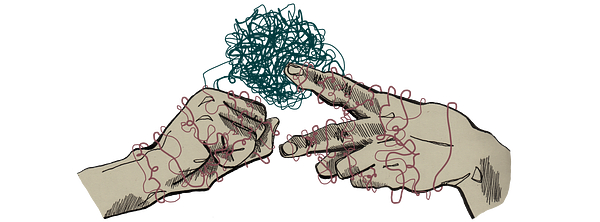Professionals and Practitioners
This digital resource tells the story of how our brains interpret the world around us and how this translates in our bodies, emotions and behaviours. It has been designed to be used by professionals working with young people interested in learning more about the science of conflict and boosting their wellbeing.

Emotion Work with Families and Young People
Summary
- When working with young people and families it is helpful to look at what emotions are, how we can recognise them, what needs they are communicating, and the importance of ALL emotions.
- Tools and exercises such as the Emotions Iceberg, Feelings Wheel, Emotional Arousal Cycle, Window of Tolerance, Mood Journaling, Emotion Body Maps, Naming Emotions, Emotion Drawing, and Emotion Need Exercise can be helpful to explore emotions.
- When working with difficult emotions, work with the young person or family to identify their warning signs and calming strategies to prevent escalation.
- Acknowledge difficult emotions but separate it from the person and the behaviour. It is not an angry person; it is a person who is experiencing anger and they may or may not be following behavioural urges.
- When having difficult conversations, be aware of your body language, tone of voice and the environment you are in.
If you work with young people and families you may be in a position to support them to develop their emotional intelligence, explore their emotions and how they relate to behaviours and relationships, and practice emotional regulation when difficult emotions arise.
Emotional Programming
People are likely to have a predisposition to respond and express emotions in a certain way based on the family system they grew up in. As children we learn from our caregivers how to respond in different situations. There is therefore a generational pattern to our relationship with emotions. The way we think about emotions is also influenced by our culture, social attitudes and family norms.
Here are some questions that might help a family or young person explore how childhood experiences and family systems have influenced the way they respond to emotions:
· As you were growing up, what messages were you given about emotions?
· What were you told about the best way to handle your emotions?
· What emotions did your family freely express?
· What emotions did your family suppress or frown on?
· How did the adults in your family handle their own ‘uncomfortable’ emotions?
· How did the adults in your family react to your ‘uncomfortable’ emotions?
While we may have certain tendencies in relation to expressing and responding to emotions, we can always learn knew ways to work with our emotions.
When working with difficult emotions, work with the young person or family to identify their warning signs and calming strategies to prevent escalation.
Learning About Emotions
Here are some key points to cover when supporting young people to learn about emotions:
- There are no negative or positive emotions. All emotions are necessary. We might feel some emotions more intensely than others and some might feel more comfortable than others. Emotions can come with pleasant or unpleasant sensations, but they are not BAD emotions.
- Emotions are messages to the brain. Try to get young people to think about what an emotion is telling them. What is the need or want behind the emotion?
- Although some emotions are associated with specific facial expressions or sensations in the body, everyone experiences emotions differently.
- Emotions are felt in the body and may be accompanied by behavioural urges, but these urges are in our control.
- Learning to recognise emotions in ourselves allow us to name and express how we are feeling. Supporting a young person to map out how emotions feel in the body, practice naming them, or identify what causes an emotion can help them understand, regulate and express their feelings more effectively.
- Learning what signs of emotion to look out for in others is important for building empathy.
- We respond and express emotions differently at different times. This is based on our past experiences as well as the current context. We might have different emotional responses to the same stimuli on different days, especially if our window of tolerance is narrow that day.
- There are primary and secondary emotions – encourage the young person to explore what the primary emotion is.
Useful Tools to Explore Emotions
- Emotion Iceberg: This is used to explore primary emotions. Write the secondary emotions (such as anger) in the tip of the iceberg, then explore what other emotions are felt underneath (such as hurt, embarrassment, rejection etc.)
- Feelings Wheel: There are many types of feelings wheel. The Human System Emotion Wheels are particularly good for working with young people as you start by identifying if the emotion feels comfortable or uncomfortable before exploring different emotions words. Feeling wheels are good for helping young people name their emotions more accurately and increase their emotional vocabulary.
- Emotional Arousal Cycle: The emotional arousal cycle can be used to map out what emotional escalation looks and feels like. For each stage of the cycle ask the young person what they feel in their body, what behaviours it might cause, what someone watching might see, and what could be done to help. This identifies triggers or situations that may require extra support for the young person. The exercise encourages the young person to recognise when they are in the escalation phase and crisis phases and identifies what the professional can look out for and do to deescalate.
- Mood Journaling: Encouraging young people to write down how they feel each day, or when they experience a particular emotion can help them to recognise what emotions feel like but also things that cause those emotions for them. It is also a calming exercise as it engages the thinking part of the brain and can help them to regulate their emotions.
- Mapping Physical Sensations: Use an outline of a person and get the young person to draw where they feel a certain emotion. They can do this by colouring the body different colours, drawing things such as tears, sweat, heartbeat etc, or by adding written labels. You can also talk through the sensations as they are feeling them, encouraging them to notice their breath, or put their hand on wherever they are feeling the emotion (head, chest, stomach etc.)
- Naming Emotions: It is useful to practice naming emotions. You can do this by asking them what emotion they are feeling in that moment or reflect back on what emotion they felt in a particular situation. Encourage them to be specific so if they felt anger, was it frustration, annoyance, rage or something else?
- Drawing Emotions: Sometimes if a young person is struggling to articulate their emotion or map the sensations in their body it can be helpful to encourage them to draw more abstractly what it feels like. Encourage to choose the colour they associate with most and observe if the lines are sharp or rounded.
- Emotions Needs Exercise: It can be helpful to support young people to connect emotions to actions. Encourage young people to write what message they think an emotion is telling them and what action they could perform in response. For example: Sadness “I need comfort” watch a movie with a friend.
Working with Difficult Emotions
The warning signs of emotions will differ from person to person as will the best coping strategies to deal with them. It can be helpful to discuss what emotions look like and what helps calm or soothe the person you are working with directly, especially if you plan on having a difficult conversation with them. Be aware of your body language, tone of voice, and the environment you are in. In general, it is always important to acknowledge an emotion when you notice it. Because different emotions can have similar indicators, you might want to share your observations and leave space for them to correct you: “You seem sad today. Have I interpreted your mood correctly?”.
Here are some things to consider when working with difficult emotions:
Anger
Warnings signs:
- Red face; raised voice; swearing; withdrawal; fidgeting or shaking; standing up; pacing; clenched fist; clenched jaw; scowling; pursed lips; sweating.
What to do:
- Acknowledge the emotion
- Remain calm. Use non-threatening body language and a low, level voice.
- Allow space and stop the conversation if needed
- Remember that once they are in fight, flight or freeze state they will be unable to respond in their usual way.
- When they have calmed down, explore what was behind the anger.
Sadness
Warnings signs:
- Furrowed brows; slumped posture; low vocal tones; withdrawn; crying; comfort habits such as hair stroking, nail biting etc; changes in normal behaviour; resignation; over agreeability; loss of appetite; low energy/tiredness; sense of worthlessness/low self-esteem.
What to do:
- Acknowledge the emotion.
- Give them time to feel the sadness. Make use of silence and time to reflect.
- Offer reassurance but do not try to empathise by sharing your own experience.
- Reassure them that it is okay for them to release their emotion in a healthy way.
- Your priority should be to listen rather than to advise, at least initially.
Anxiety/worry
Warnings signs:
- Shrinking or slumped posture; shallow, rapid breaths; soft voice; withdrawn; comfort habits such as hair stroking, nail biting etc; changes in normal behaviour; fidgeting, trembling or shaking; pacing; goosebumps; sweating; wide eyes; rocking/hugging oneself; jumpiness (note anxiety/fear may lead to a fight/flight response which may come across as anger).
What to do:
- Acknowledge the emotion.
- Remove anything that is directly causing the anxiety (e.g. take them to a quiet place if noise is bothering them).
- Encourage them to use their own calming techniques.
- If they are able, explore what is causing the anxiety.
- Reassure them without oversharing your own experience.
- Allow space and stop the conversation if needed.
- Maintain a low, calm voice and neutral body language.
References and Links
- The Feelings Wheel by Dr. Willcox.
- Human Systems Emotion Wheel
- Anger/Emotion Iceberg
- Emotional Arousal Cycle (Anger/Assault Cycle)





